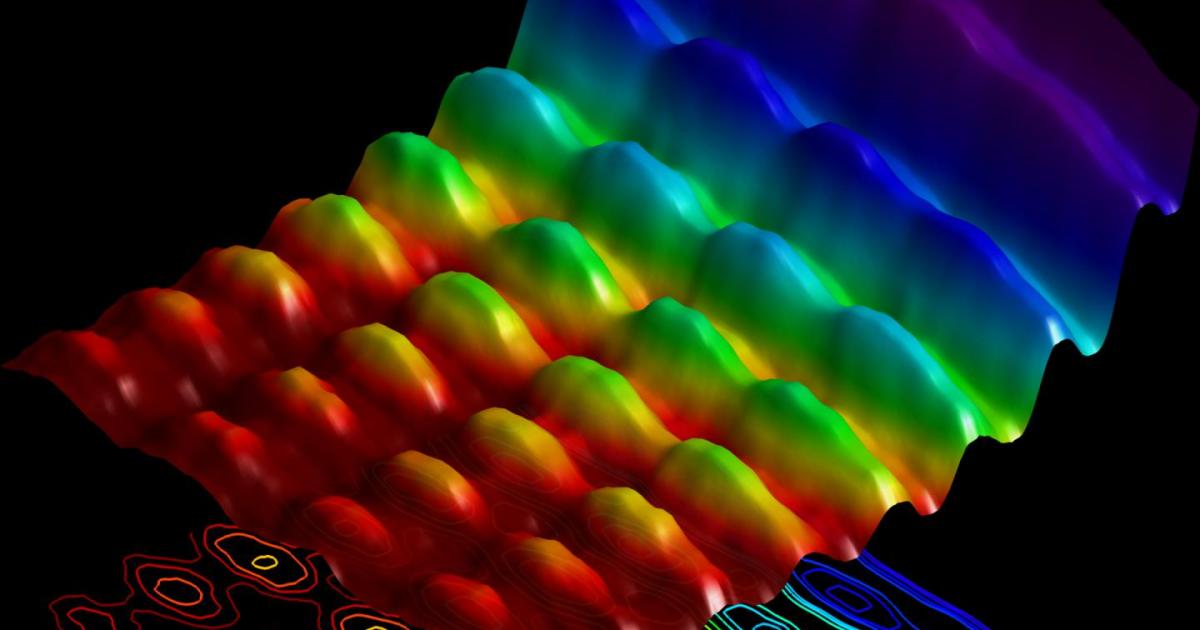Sign up for the Starts With a Bang newsletter
Travel the universe with Dr. Ethan Siegel as he answers the biggest questions of all.
Ever since the discovery of the bizarre behavior of quantum systems, we’ve been forced to reckon with a seemingly uncomfortable truth. For whatever reason, it appears that what we perceive of as reality — where objects definitively exist, in definite locations, with intrinsic properties that can always be measured exactly — isn’t exactly an accurate description of “what is real?” Instead, many of those physical properties themselves cannot be fundamentally determined by any means. As long as you don’t measure or interact with your quantum system, what we interpret as “reality” exists in an indeterminate state; we can only speak of the properties it possesses and the outcomes of any potential measurements in a statistical, probabilistic sense. Each measurement always returns one and only one answer, but predicting exactly what physical state we’re going to measure ahead of time cannot be done via any known method.
But is that a fundamental limitation of nature, where there exists an inherent indeterminism until a measurement is made or a quantum interaction occurs? Or could there be a “hidden reality” that’s completely predictable, understandable, and deterministic that underlies what we see? It’s a fascinating possibility, one that was preferred by no less a titanic figure than Albert Einstein, but one that no physicist, including Einstein, has ever concocted a satisfactory answer to.
Interestingly, back in the 1960s, a theorem was proved (known as the Kochen-Specker theorem) that asserted that no, hidden variables absolutely cannot exist within quantum mechanics. But here in 2025, does that line of reasoning still hold up? It turns out that reality is a complicated thing, especially when it comes to quantum phenomena. Let’s start with the most famous example of quantum indeterminism to investigate: the Heisenberg uncertainty principle.
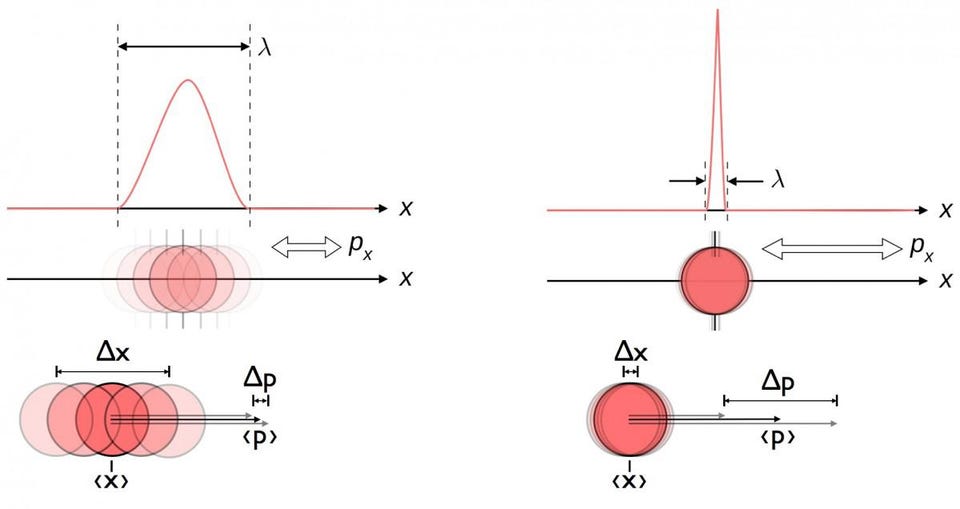
This diagram illustrates the inherent uncertainty relation between position and momentum. When one is known more accurately, the other is inherently less able to be known accurately. Both position and momentum are better described by a probabilistic wavefunction than by a single value. Other pairs of conjugate variables, including energy and time, spin in two perpendicular directions, or angular position and angular momentum, also exhibit this same uncertainty relation.
Credit: Maschen/Wikimedia Commons
In the classical, macroscopic world, there’s no such thing as what quantum physicists know as “the measurement problem.” Classically, you can take any object that you like — a jet, a car, a tennis ball, a pebble, or even a mote of dust — and you can not only measure any of its properties that you want to, but based on the laws of physics that we know, we can extrapolate what those properties will be arbitrarily far into the future. All of Newton’s, Einstein’s, and Maxwell’s equations are fully deterministic; if you begin with the locations and motions of every particle in your system or even in your entire Universe, the laws of physics can tell you precisely where they will be and how they’ll be moving at any point in the future. The only uncertainties we’ll have are set by the limits of the equipment we’re using to take our measurements, and as we decrease those measurement uncertainties, our predictive power becomes ever greater.
However, once we begin considering objects in the quantum world, this is no longer true. There is an inherent uncertainty to how well, simultaneously, you can know a wide variety of properties together. If you try to measure, for example a particle’s:
- position and momentum,
- energy and lifetime,
- spin in any two perpendicular directions,
- or its angular position and angular momentum,
you’ll find that there’s a limit to how well you can simultaneously know both quantities. According to the Heisenberg uncertainty principle, the product of the uncertainty on both of those properties can be no smaller than some fundamental value, which is proportional to Planck’s constant.
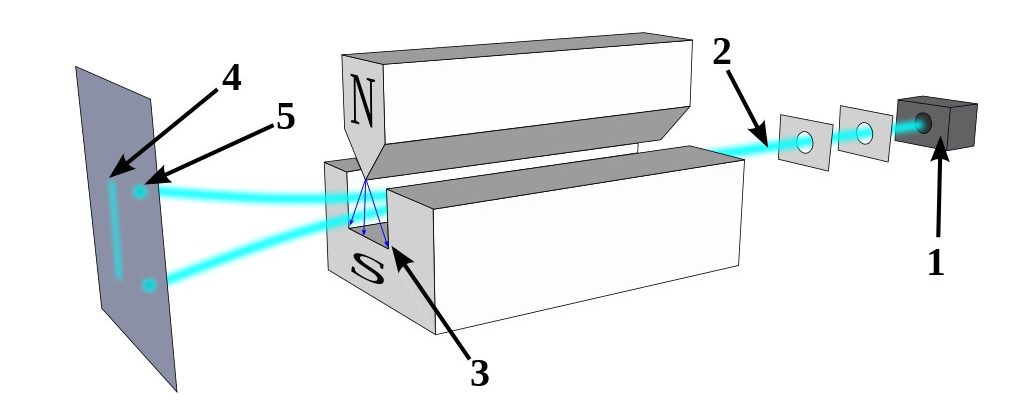
A beam of particles fired through a magnet could yield quantum-and-discrete (5) results for the particles’ spin angular momentum, or, alternatively, classical-and-continuous (4) values. This experiment, known as the Stern-Gerlach experiment, is a setup that allows us to probe the nature of the particles being passed through the magnetic apparatus. Over its history, this setup of experiment has demonstrated a number of important quantum phenomena, including the quantization of spin and the non-commutation of angular momentum in mutually perpendicular directions.
Credit: Tatoute/Wikimedia Commons
In fact, the instant you measure one such quantity to a very fine precision, the uncertainty in the other, complementary one will spontaneously increase so that the product is always greater than a specific value. One illustration of this, shown above, is the Stern-Gerlach experiment. Quantum particles like electrons, protons, and atomic nuclei have an angular momentum inherent to them: something we call quantum “spin,” even though nothing is actually physically spinning about these particles. In the simplest case, these particles have a spin of ½, which can be oriented either positively (+½) or negatively (-½) in whatever direction you measure it.
Now, here’s where it gets bizarre. Let’s say we shoot these particles — in the original version of the experiment, they used silver atoms — through a magnetic field oriented in a certain direction. Half of the particles will get deflected in one direction (for the spin = +½ case) and half will get deflected in the other (corresponding to the spin = -½ case). If we then pass these particles through another Stern-Gerlach apparatus oriented the same way, there will be no further splitting: the +½ particles and the -½ particles will “remember” which way they split.
But if we instead pass them through a magnetic field oriented perpendicular to the first set of magnets, they’ll split once again in the positive and negative directions, as though there was still this uncertainty in which ones were +½ and which ones were -½ in this new direction. And now, if we go back to the original direction and apply yet another magnetic field, they’ll go back to splitting in the positive and negative directions again. Somehow, measuring their spins in the perpendicular direction didn’t just “determine” those spins, but somehow destroyed any information that we previously knew (or determined) about the original splitting direction.
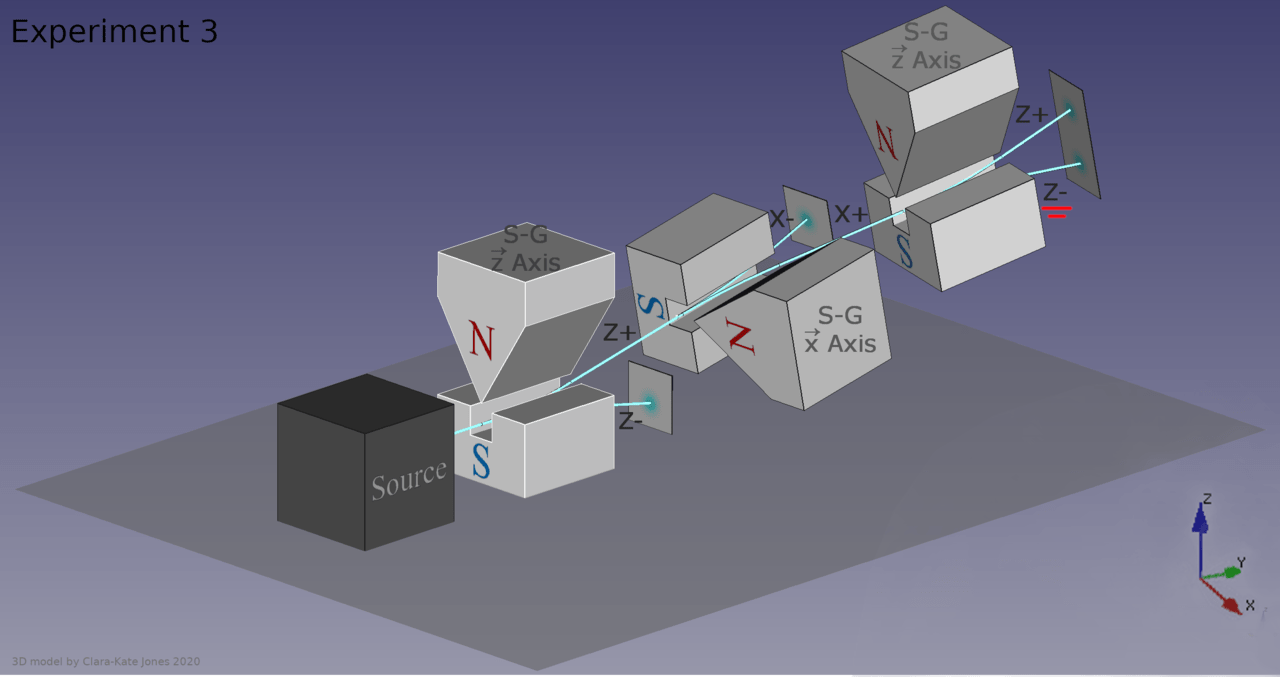
When a particle with quantum spin is passed through a directional magnet, it will split in at least 2 directions, dependent on spin orientation. If another magnet is set up in the same direction, no further split will ensue. However, if a third magnet is inserted between the two in a perpendicular direction, not only will the particles split in the new direction, but the information you had obtained about the original direction gets destroyed, leaving the particles to split again when they pass through the final magnet.
Credit: MJasK/Wikimedia Commons
This is definitely not intuitive, and it’s a puzzle that practically calls out for some way to make sense of it. The way we traditionally handle this is to recognize that there’s an inherent indeterminism to the quantum world that can never be completely eliminated. Whenever anyone attempts to exactly determine a property of a particle, such as the spin of that particle in one particular dimension, the corresponding uncertainty in the perpendicular dimensions must become infinitely large to compensate, otherwise Heisenberg’s inequality would be violated. There’s no “cheating” when it comes to the uncertainty principle; you can only obtain meaningful knowledge about the actual outcome of your system through measurements.
However, there has long been an alternative proposal to attempt to explain what’s going on: the idea of hidden variables. In a hidden variables scenario, the Universe would really be deterministic in a sense: all quanta would actually have intrinsic properties that would enable us to predict precisely where they’d end up and what the outcome of any quantum experiment would be in advance. The only problem is that some of those hypothetical variables, the ones that govern the behavior of this system, cannot be measured by us here in our present reality. In other words, those variables are assumed to exist, but are “hidden” from our ability to measure them.
In principle, if we could measure these variables, we’d understand that what we perceive as an “indeterminate” behavior that we observe merely reflects our own ignorance of the variables that determine what’s truly going on. If we could find, identify, and understand the behavior of these hidden variables that truly underlie reality, the quantum Universe wouldn’t appear so mysterious after all, and would instead reveal an underlying, completely deterministic reality.
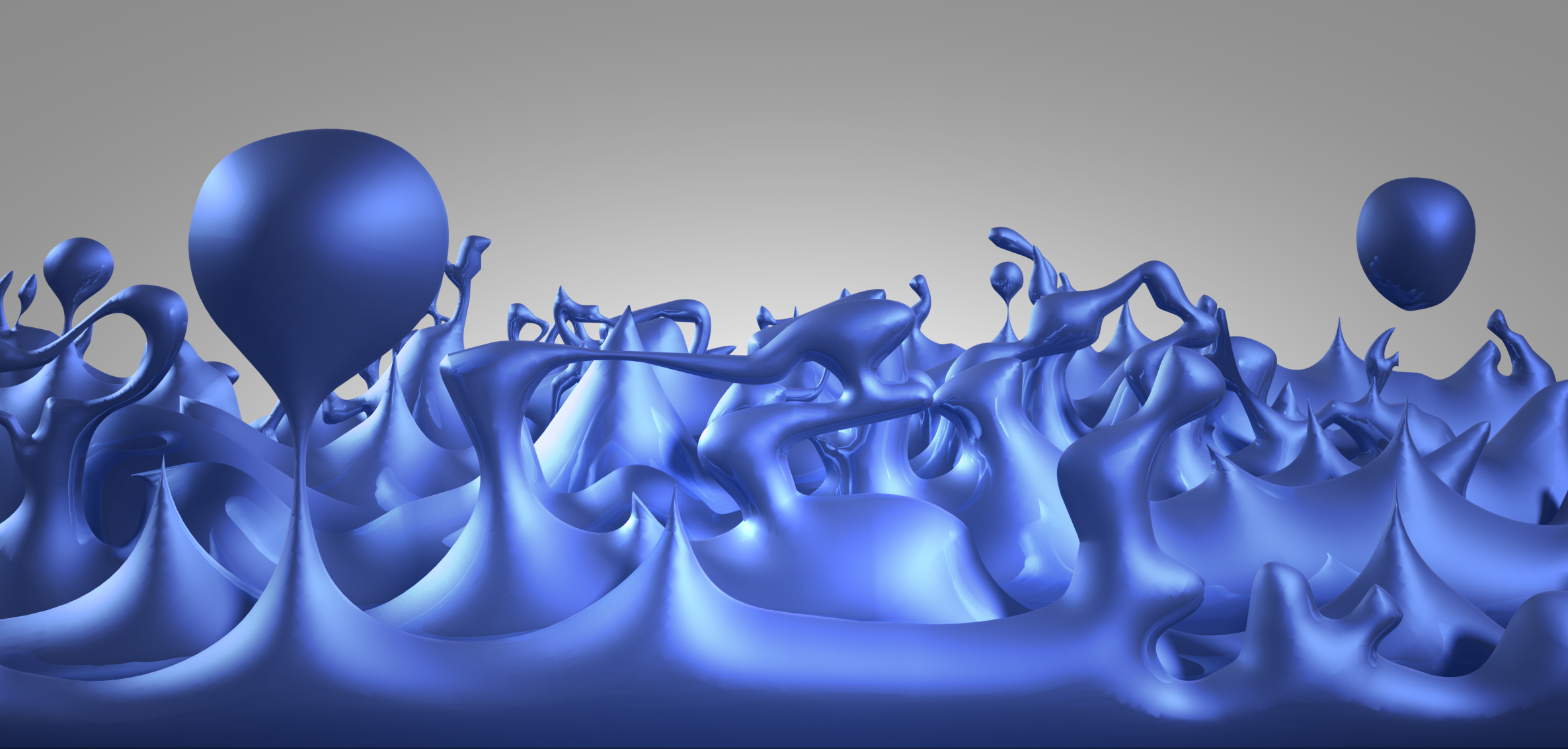
Although, at the quantum level, reality appears to be jittery, indeterminate, and inherently uncertain, many have firmly believed that there may be properties that are invisible to us, but that nevertheless determine what an objective reality, independent of the observer, truly may be. We have not found any such evidence for this assertion as of 2025.
Credit: NASA / CXC / M.Weiss
The way I’ve always conceived of hidden variables is to imagine the Universe, down at the quantum scales, to have some set of dynamics that govern it, but that we do not understand. However, assume that even though we can’t or don’t understand what those dynamics are, we are able to directly observe the effects that those dynamics cause. It’s like imagining our reality made up of grains of sand, where each individual grain appears to fluctuate, jitter, and move around randomly, similar to the Brownian motion of particles that Einstein discussed in one of his “miracle year” papers back in 1905.
However, we can imagine that this “jitter” is caused by some sort of mechanism that’s simply invisible to us. For grains of sand, we can imagine that they’re hooked up to a vibrating plate that lies underneath them, but that the plate is completely unobservable: hidden from our reality. On the other hand, we can easily observe the grains of sand that lie atop the plate. If all you could see were those grains of sand, it would look to you as though each individual grain were vibrating with a certain amount of inherent randomness to it. Even large-scale patterns or correlations that you could observe might even exist between disparate grains of sand, but you couldn’t predict the behavior of any one grain in particular.
However, because you cannot observe, measure, or even detect the vibrating plate beneath the grains, you cannot know the full set of dynamics that govern this physical system. Your knowledge is the thing that’s incomplete, and what appears to be random (the motion of sand grains) actually has an underlying explanation, albeit one that cannot be fully understood by someone who cannot observe such a plate.
It’s a fun idea to explore, but like all things in our physical Universe, we must always confront our ideas with measurements, experiments, and observations that can be made from within our material Universe.
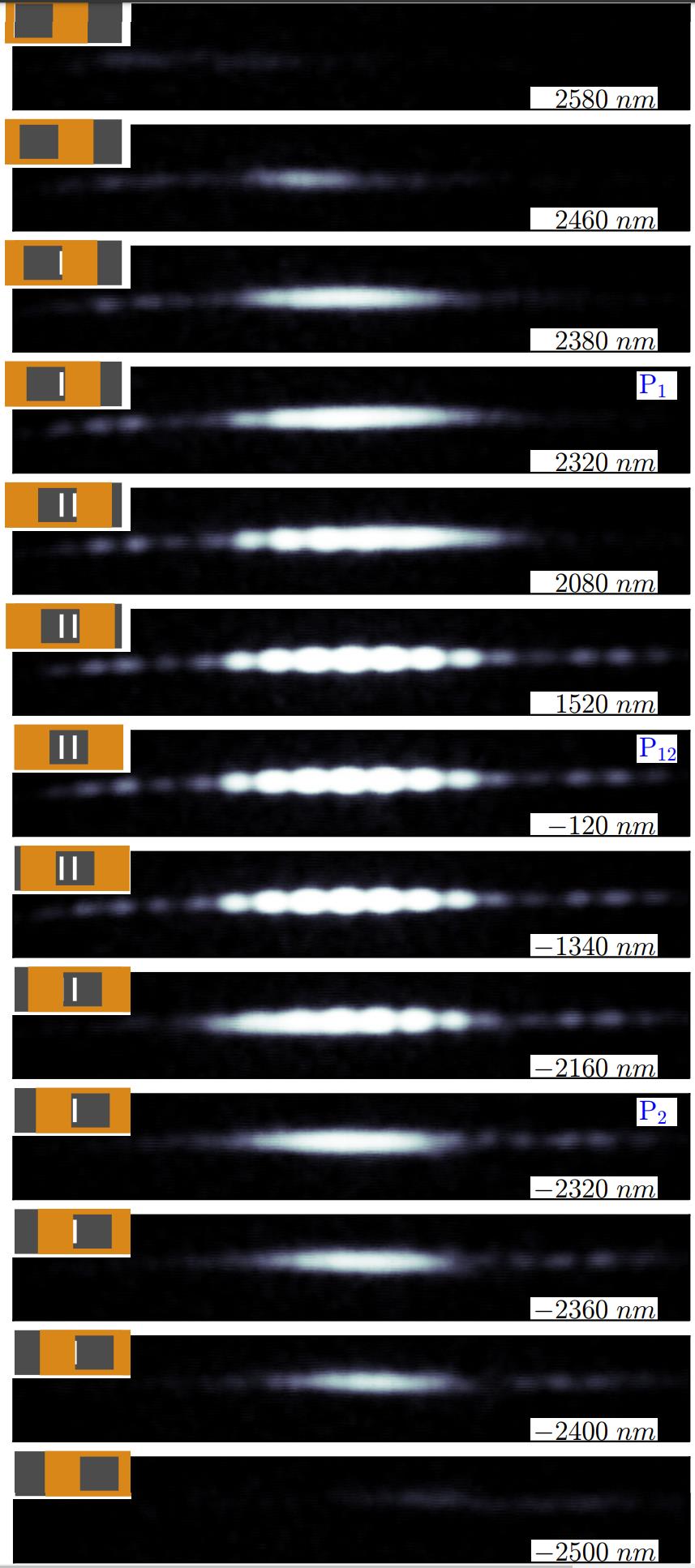
This multi-panel diagram shows the experimental results of the ‘masked’ double-slit experiment. Although there are always two slits present, there’s a mask that moves across the experimental apparatus. First, both slits are covered, then the first slit is revealed, then both slits are revealed, then the first slit is covered back up, and then the second slit is also covered back up. Note that when the first slit (P1), the second slit (P2), or both slits (P12) are open, the pattern you see is very different depending on the number of slits available for the quantum particles to travel through.
Credit: R. Bach et al., New J. Phys., 2013
One such experiment — in the opinion of many physicists, the most important experiment for illustrating the behavior of quantum physics — is the double-slit experiment. When you take even a single quantum particle and fire it at a double slit, you can measure, on a background screen, where that particle lands. If you do this over time, hundreds, thousands, or even millions of times, you’ll eventually be able to see what the pattern that emerges looks like.
Here’s where it gets weird, though.
- If you don’t measure which of the two slits the particle goes through, you get an interference pattern: spots where the particle is very likely to land, and spots in between where the particle is very unlikely to land. Even if you send these particles through one-at-a-time, the interference effect still persists, as though each particle were interfering with itself.
- But if you do measure which slit each particle goes through — such as with a photon counter, a flag, or via any other mechanism — that interference pattern doesn’t show up. Instead, you just see two clumps: one corresponding to the particles that went through the first slit and the other corresponding to those that went through the second.
Many variations of the double-slit experiment have been performed, and while they reveal an enormous amount of information about the type of quantum “weirdness” that exists within our Universe, they cannot reveal or exclude the presence of hidden variables. Instead, you might try another approach to try to pin down what’s actually going on in the Universe even further, by performing another type of experiment: a delayed-choice quantum experiment.
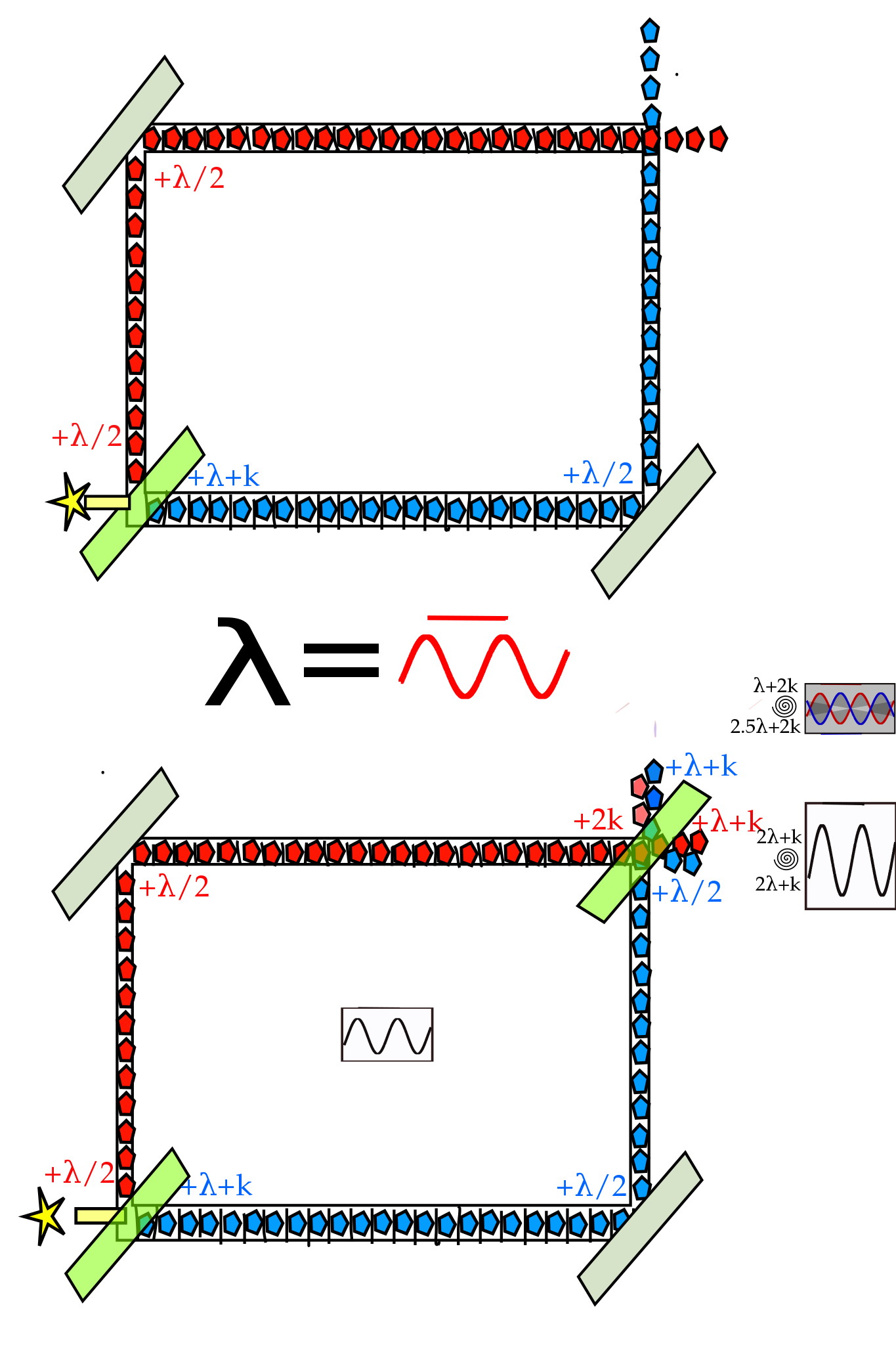
This image illustrates one of Wheeler’s delayed-choice experiments. In the top version, a photon is sent through a beam splitter, where it will either take the red or the blue path, and hit one detector or the other. In the bottom version, a second beam splitter exists at the end, producing an interference pattern when the paths are combined. Delaying the choice of configuration has no effect on the experimental outcome.
Credit: Patrick Edwin Moran/Wikimedia Commons
One of the greatest physicists of the 20th century was John Wheeler. Wheeler was thinking about this observed quantum “weirdness,” and in particular about the fact that these quanta sometimes behave as particles and sometimes as waves. Because of this, he began to devise experiments that attempted to catch these quanta in the act of switching their behaviors: acting like waves when we expect particle-like behavior and vice versa. Perhaps the most illustrative of these experiments is shown above: passing a photon through a beam splitter and into an interferometer, one with two possible configurations, “open” and “closed.”
Interferometers work by sending light in two different directions, and then recombining them at the end, producing an interference pattern dependent on the difference in the path lengths (or the light-travel time) between the two routes. Wheeler conceived of two possible configurations for such an experiment.
- If the configuration is “open” (as shown at the top of the above figure), you’ll simply detect the two photons individually and won’t get a recombined interference pattern, as there will be no beam splitter to recombine the beams in the final location.
- If the configuration is “closed” (as shown at the bottom of the above figure), then interference will occur, and you’ll see the wave-like effects on the screen.
What Wheeler wanted to know is if these photons “knew” how they’d have to behave in advance. He’d start the experiment in one configuration, and then, right before the photons arrived at the end of the experiment, would either “open” or “close” (or not) the apparatus at the end: either inserting or removing the final beam splitter even while the photons themselves were already in transit.
If the light knew what it was going to do, you’d be able to catch it in the act of being a wave or particle, even when you switched the final outcome.

Trajectories of a particle in a box (also called an infinite square well) in classical mechanics (A) and quantum mechanics (B-F). In (A), the particle moves at constant velocity, bouncing back and forth. In (B-F), wavefunction solutions to the Time-Dependent Schrodinger Equation are shown for the same geometry and potential. The horizontal axis is position, the vertical axis is the real part (blue) or imaginary part (red) of the wavefunction. These stationary (B, C, D) and non-stationary (E, F) states only yield probabilities for the particle, rather than definitive answers for where it will be at a particular time.
Credit: Steve Byrnes via Mathematica; Sbyrnes321/Wikimedia Commons
In all cases, however, the quanta did exactly what you’d expect they would have done had they known what the “final” configuration was going to be all along. Similar “knowing in advance” phenomena appears when we perform the double slit experiments as well: if you interact with them as they’re passing through a slit, they behave as particles, while if you don’t, they behave as waves. In the delayed-choice experiment, if the final device to recombine the photons is present when they arrive, you get the wave-like interference pattern; if not, you just get the individual photons without interference. As Niels Bohr — Einstein’s great rival on the topic of uncertainty in quantum mechanics — correctly stated,
“…it…can make no difference, as regards observable effects obtainable by a definite experimental arrangement, whether our plans for constructing or handling the instruments are fixed beforehand or whether we prefer to postpone the completion of our planning until a later moment when the particle is already on its way from one instrument to another.”
But does this rule out the idea that there could be hidden variables governing the quantum Universe? Not fully. What it does do is place significant constraints on the nature of these hidden variables. As many have shown over the years, beginning with John Stewart Bell in 1964, if you try to save a “hidden variables” explanation for our quantum reality, something else significant has got to give.
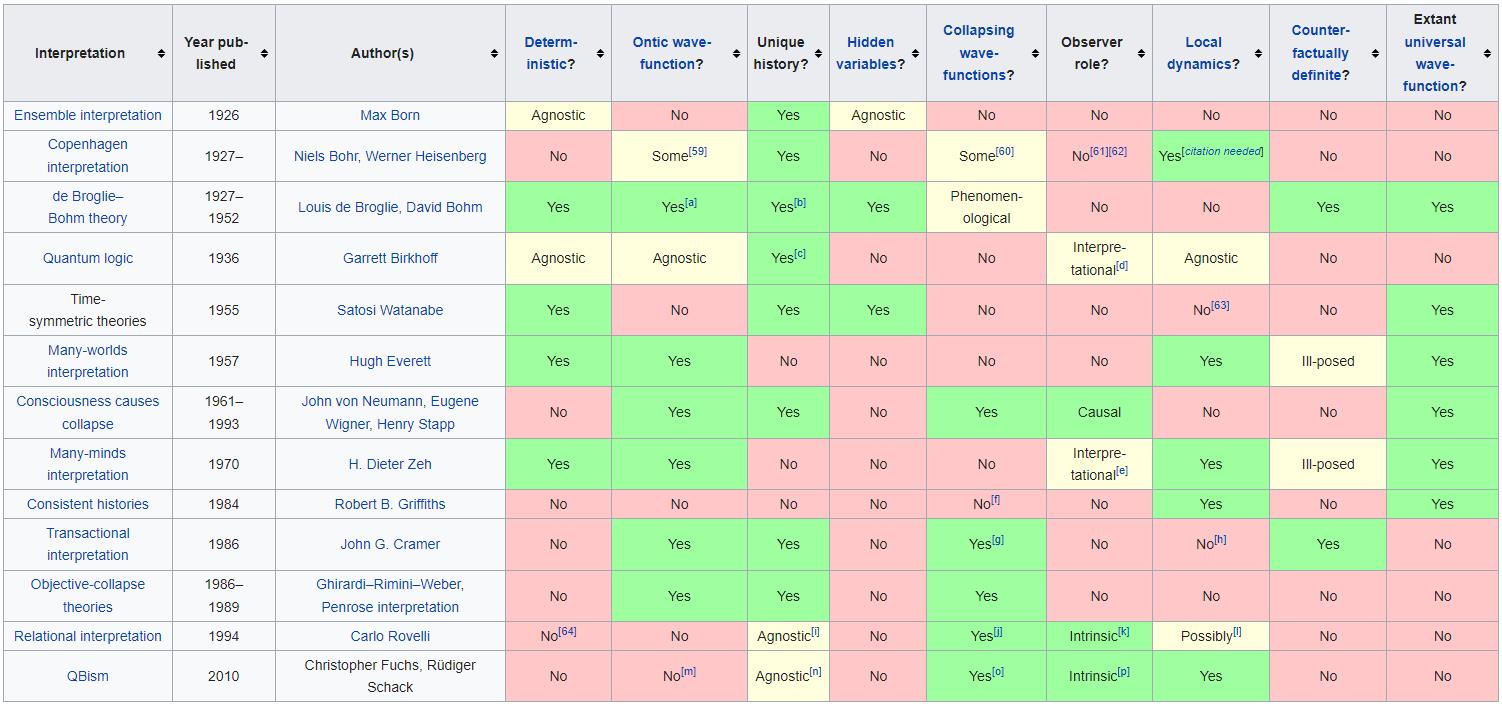
A variety of quantum interpretations and their differing assignments of a variety of properties. Despite their differences, there are no experiments known that can tell these various interpretations apart from one another, although certain interpretations, like those with local, real, deterministic hidden variables, can be ruled out.
Credit: English Wikipedia page on Interpretations of Quantum Mechanics
In physics, we have this idea of locality: that no signals can propagate faster than the speed of light, and that information can only be exchanged between two quanta at the speed of light or below. What Bell first showed was that, if you want to formulate a hidden variable theory of quantum mechanics that agrees with all of the experiments we’ve performed, that theory must be inherently nonlocal, and some information must be exchanged at speeds greater than the speed of light. Because of our experience with signals only being transmitted at finite speeds, it’s not so hard to accept that if we demand a “hidden variables” theory of quantum mechanics, locality is something we have to give up.
Well, what about the Kochen-Specker theorem, which came along just a few years after the original work of Bell? It states that you don’t just have to give up locality, but you have to give up what’s called quantum noncontextuality. In simple terms, it means that you have to give up on the idea that any experiment you perform that will end up giving you a measured value for any quantum property of your system is not simply “revealing pre-existing values” that were already determined in advance.
Instead, when you measure a quantum observable, the values you obtain are dependent on what we call “the measurement context,” which means the other observables that are measured simultaneously along with the one you’re specifically after. The Kochen-Specker theorem was the first indication that quantum contextuality — that the measurement result of any observables depends on all the other observables within the system — is an inherent feature not only of quantum mechanics, but of whatever a “full” picture of reality is. In other words, you cannot assign values to the underlying physical quantities that are revealed by quantum experiments without destroying the relationships between them that are essential to the functioning of the quantum Universe.
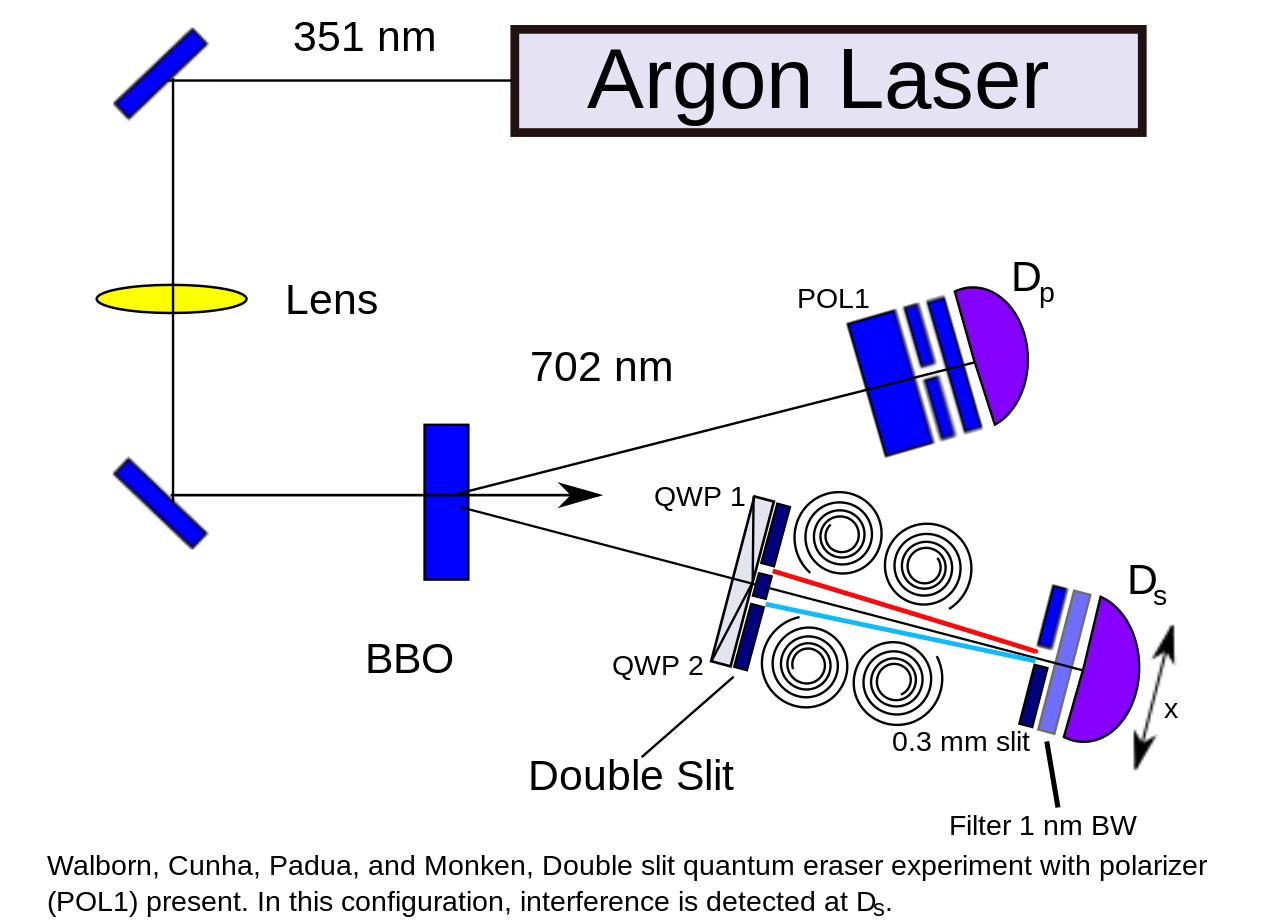
A quantum eraser experiment setup, where two entangled particles are separated and measured. No alterations of one particle at its destination affect the outcome of the other. You can combine principles like the quantum eraser with the double-slit experiment and see what happens if you keep or destroy, or look at or don’t look at, the information you create by measuring what occurs at the slits themselves.
Credit: Patrick Edwin Moran/Wikimedia Commons
The thing we always have to remember, when it comes to the physical Universe, is that no matter how certain we are of our logical reasoning and our mathematical soundness, the ultimate arbiter of reality comes in the form of experimental results. When you take the experiments that we’ve performed and try to deduce the rules that govern them, you must obtain a self-consistent framework. Although there are a myriad of interpretations of quantum mechanics that are equally as successful at describing reality, none have ever disagreed with the original (Copenhagen) interpretation’s predictions. Preferences for one interpretation over another — which many possess, for reasons I cannot explain — amount to nothing more than ideology.
If you wish to impose an additional, underlying set of hidden variables that truly governs reality, there’s nothing preventing you from postulating their existence. What the Kochen-Specker theorem tells us, though, is that if those variables do exist, they do not pre-determine the values revealed by experimental outcomes independently of the quantum rules we already know. This realization, known as quantum contextuality, is now a rich area of research in the field of quantum foundations, with implications for quantum computing, particularly in the realms of speeding up computations and the quest for quantum supremacy. It isn’t that hidden variables can’t exist, but rather that this theorem tells us that if you wish to invoke them, here’s what sort of finagling you have to do.
No matter how much we might dislike it, there’s a certain amount of “weirdness” inherent to quantum mechanics that we simply can’t get rid of. You might not be comfortable with the idea of a fundamentally indeterminate Universe, but any viable alternative interpretation, including those that possess hidden variables, don’t allow you to determine what you’re going to measure in advance at all. Only by performing the experiment and looking and the measured result can you get an answer to the deepest quantum questions of all.
This article was first published in December of 2022. It was updated in August of 2025.
Sign up for the Starts With a Bang newsletter
Travel the universe with Dr. Ethan Siegel as he answers the biggest questions of all.
